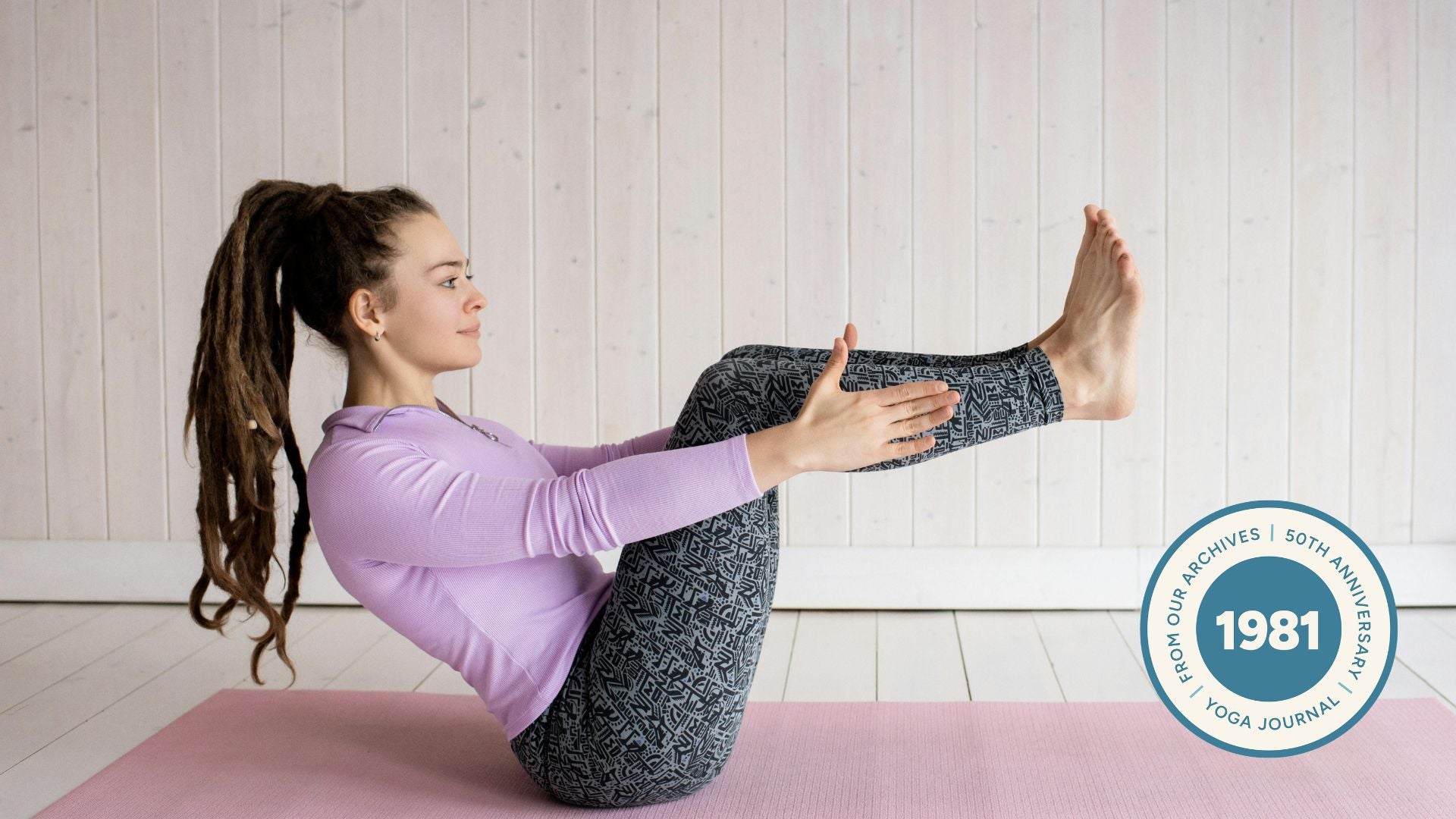“], “filter”: { “nextExceptions”: “img, blockquote, div”, “nextContainsExceptions”: “img, blockquote, a.btn, a.o-button”} }”>
Heading out the door? Read this article on the new Outside+ app available now on iOS devices for members!
>”,”name”:”in-content-cta”,”type”:”link”}}”>Download the app.
Lately it seems like you can’t throw a rock without hitting a gong. Or a singing bowl. Or a harmonium. Like many of the spiritual and healing arts, sound therapy (or, depending on whom you ask, sound healing, or a sound bath) has experienced a surge of popularity over the past decade.
The goal of sound therapy is to provide a positive, calming experience, with sonic vibrations inviting you to turn within. Throughout a sound therapy session, practitioners use instruments such as tuning forks, crystal bowls, and gongs that are designed to promote relaxation. But while your experience may be a passive one, there’s a lot more to setting up a sound bath than meets the ear.
Ironically, creating this sort of sound situation—one that’s thoughtful, relaxing, and entirely passive for participants—requires a lot of work on the part of the practitioner.
First Off, Why Sound Therapy?
Research supports the power of certain frequencies to positively impact both mental and physical health, although many sound therapists consider the practice to be more of a mindfulness tool, allowing you to chill out and, perhaps, restore yourself through stillness.
“Sound healing is a very yin practice,” says Lea Garnier, founder of Sage Academy of Sound, which has served a sound healing hub in Woodstock, New York, since 2008. “We’re laying down, we’re surrendering, we’re going into the dark, we’re deepening our breath, going into the mystery, calming the chattering of the mind.”
She adds that the predominant use of drone sounds, or humming vibrations without a scale to follow, forces the mind to give up in a good way. “When the mind can let go, it can truly relax and connect with your higher consciousness,” she says.
Setting Up a Sound Bath
Unlike a regular meditation, which requires only your body and some silence (or perhaps a guiding voice), sound baths demand instruments, set-up, even sound checks.
Sound journeys vary widely depending on who is offering them and where.For facilitator Alyssa Lauren Stone, setting up a space takes about two hours—not including travel time. “I used to do AV for my college job at NYU TV, so I am very picky about audio and visual,” she explains.
Alternatively, sound therapist Adrienne Bawa of Sound Bird Healing likes her set up to be about an hour, max. She notes that for smaller scale sessions, like a class at Equinox, her 7 bowls, 24 inch gong, and ancillary instruments can be set up in as little as 10 minutes.
“This is not ideal,” she concedes. “I like to get grounded into space.”
Getting There
Before a sound practitioner can ground down in their sound bath space, they have to transport themselves—and all their instruments.
“My husband and my daughter have become my roadies,” says Stone. “It looks like you have a lot of these one-person sound healings, but that one person has had to carry tons of instrument and sound equipment. You can only take as much as you can carry.”
For this reason and more, practitioners like Garnier and Stone favor sound events that they can drive to rather than international retreats that call for flights.
“I’ve invested so much in my instruments that the last thing I would want is to find them cracked or damaged,” says Stone. In addition to the potential for breakage, lugging instruments through an airport is just a lot. One sound therapist mentioned frequent run-ins with TSA, one of which asked that she demonstrate some of the instruments to prove their use.
When travel is required, Bawa has a set of “less-is-more” travel items that are more easily packed for flights, including lightweight singing bowls and smaller gongs. Although cases designed for this purpose exist, Garnier points out that this is a relatively new development and an additional cost.
“Back in the day, they didn’t even make cases for the bowls, especially crystal bowls,” she says. Because of this, Garnier figured out a nesting system for her instruments, stacking her bowls with airplane blankets for padded protection, which helps with road trips. But even ground transport is a lot of work.
Stone says she had to get a new car to better fit all her instruments and audio equipment. A past training of Garnier’s, which included sales tables, available instruments, and the instruments for her own sound bath, required 4 cars—each of which had to be loaded, unloaded, and loaded again.
Acoustics
Sound baths are all about waves, vibrations, and music, which means that proper acoustics are paramount to a successful session. This means that much of the work of the sound healer is scouting locations, navigating given acoustics, and crafting the proper environment for the vibrations they wish to offer.
Sound baths are held in conference centers, yoga studios, outdoors, gyms, and more, and Each space is different from an acoustic point of view, making sound practitioners experts in building chambers of sound regardless of setting.
Garnier has used various methods over the years, like creating specific sound stations (think pods of crystal bowls in each corner) and placing gongs at each side of the room to create an auditory tunnel.
“We did a memorial service for someone outside, and we were trying to figure out how the sound would be contained,” she recalls. Before participants entered the “space,” Garnier and her team walked the perimeter while playing crystal bowls. “Crystal is an amplifier of energy, that’s one of its trademarks, so I figured, why not try to amplify this field?”
The results were real. “We walked outside to the tent where people were hanging out and then back to the field, and you could literally feel the difference in energy,” she says.
Stone, meanwhile, has grown accustomed to practicing in large venues, and relies on tools such as microphones and mixers to get the sound just right.
“A lot of the instruments that I use produce a very soft sound—unless of course I’m banging on a gong or something—so I have to amplify the sound depending on where I am,” she says. “It’s really important to get the correct sound from the instruments.”
The Cost of Sound Healing
While Garnier is quick to note that an effective sound therapy session can be achieved with just two tuning forks, for most, investing in copious instruments is part of the (fairly expensive) deal.
A cursory look finds the average cost of a crystal singing bowl begins at around $200; larger gongs cost anywhere from $150 to more than $2000; and a shruti box (a traditional Indian instrument that involves bellows) can be found for around $150. And this is just the beginning.
Stone’s penchant for audio means that she’s invested in a lot of sound equipment in addition to her collection of instruments, which includes (but is by no meanslimited to, a gong, Himalayan and crystal singing bowls, different kinds of drums, a harmonium, various chimes, native instruments (including shells), and a digital piano.
The more sound baths Stone hosts, the pickier she’s become about the sound. “My standards increase, and I want to deliver,” she explains. This has called for items that Stone did not foresee needing, like microphones, speakers, XLR cables, and more.
Sharing Sound Is a Passion—And a Skill
But sound therapy doesn’t need to be a production to be effective.
According to Garnier, the moment the sound bath becomes more of a performance than a healing practice, the overall “vibration” drops. If you’ve ever attended a sound bath that’s run by someone’s ego, you know exactly what she’s talking about.
“It’s a therapeutic response: we’re not healing anybody, we’re holding space for whatever healing, whatever that means to them, can happen for them,” she explains. She adds that sound therapists can only raise the room to the vibration they’re holding internally.
With this in mind, it makes sense that the best sound therapists bring soothing skills and a certain amount of musical acumen to your sound bath.
Our experts attend (and offer) trainings, cite certifications (like that provided by the International Sound Therapy Association), and reference work with other teachers, from fellow sound healers to classically trained musicians.
“There’s a lot of practice time involved in being in command of your instruments,” says Stone.
Instruments as Friends
Ask a sound healer to name their favorite instrument and they may go into the other room to answer, so as not to offend the other members of their collection. (True story.)
“The way I was trained is that all instruments, sound tools, are sentient beings,” says Garnier. “They have a kind of consciousness.” Stone shares that sentiment. “I wipe my instruments down after each session and treat them like they’re sentient beings,” she says. “I talk to them.”Viewing the instruments as conscious offers an additional layer to the sound bath experience: in many cases, your sound therapist is striving to honor the space, the sound, your journey, and the instruments themselves.
Receiving a sound healing is meant to be passive—that’s the point. But as you settle into your next sound bath, take a moment to pause in appreciation for your guide and the instruments themselves. They’ve done a lot to be here.







